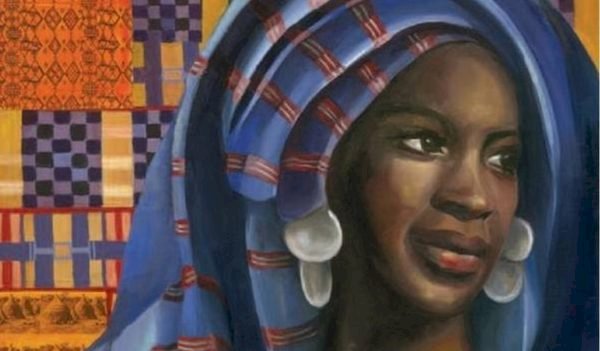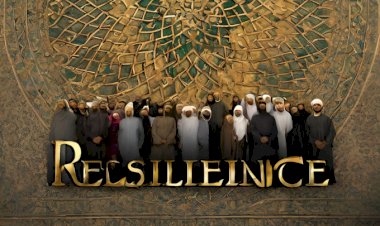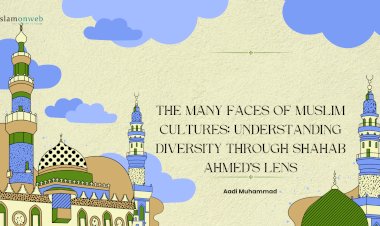Nana Asmau and Yan Taru movement: An excellent example of women empowerment from West Africa
The region beyond Sahara is often referred to as Dark Continent, a term coined by European explorers to justify their insatiable greed, brutalities and anti-blackness(racism). Such a connotation legitimized inhumane enslavement of African people and unfair exploitation of its resources.
Africa’s geographical, political, social and religious atmosphere was bizarre and confusing to Europeans. The concept of God, animism, oral history, traditional cultures, women’s high status etc. facilitated the dissemination of the () idea of the dark continent among cynical Europeans. Gradually, this concept instilled the idea that Africa always was as it is nowadays, in the public consciousness; cleverly hiding brutal stories of European imperialism, behind the curtain.
Prior to European advancement in the towns and hinterlands of Africa, the region boasted of rich and planned cities, well-established trade networks, educational centres and a decent lifestyle. The Catalan Atlas published in 1375 C.E, depicts the West African king Mansa Musa at its canter, holding a nugget of gold, referring to the region’s glory and flamboyance.
Surplus natural resources, deep interactions with North Africa and Middle East and intensive trans-Saharan and maritime trade, helped many West African and East African cities like Mali, Timbuktu, Tedmekka, Kilwa, Mombasa, Djenne, Mogadishu etc. emerge as prominent commercial and cultural centres. But it was the ripple effect by the Reconquista of European forces and colonial exploitation, which ravaged these cities. The output of relentless efforts by great figures like Mansa Musa, Al haj Askia Muhammed, Ahmad Baba Timbukti, Mohmammed Bagayogo etc. was burnt to ashes. Only a few legacies survived this centuries long torture of blood-sucking Europeans.
Amongst these, Yan Taru movement deserves special mention, as it still inspires and educates thousands of women across Nigeria and Niger. The movement was one of the boldest feminist initiatives introduced in the sixteenth century C.E and systemized by a young Fula princess of Sokoto Caliphate, namely Nana Asma’u.
Nana Asma’u: The birth of a legend.
Nana Asma’u was born in 1793, as the daughter of Fula chief Sheikh Usman dan Fodio, in Gobir- one of the Hausa states which was largely inhabited by Hausa and Fula ethnic groups. Most days of her childhood were politically turbulent, as the strife between Hausa elites and their enemies, led by Fula chieftains precipitated the ‘Jihad of 1804’.
Jihad of 1804 marks the turning point in West Africa’s history and in the life of Nana Asmau. The Fulani war reinstalled Islamic values which were contaminated by its assimilation of local Bori beliefs and superstitions. Rather than the Africanization of Islam, many rulers at the end of Hausa kingdoms resorted to the older Bori culture to consolidate their power. This led to discontenting the Ulema and tyrannical oppression of peasants and lower class. Such social and political context necessitated an uprising against the ruling class, supported by Ulema and lower classes of the society; which was the Jihad of 1804. In fact, Fulani Jihad laid foundation to a more systematic and efficient governing system ingrained on Islamic values, namely Sokoto Caliphate.
The emergence of Sokoto caliphate, their adherence to Qadiri sufi order, and the strong religious background of Sheikh Usman dan Fodio gifted Nana Asma’u numerous perspectives and expertise in various Islamic and social subjects. In addition, her father stressed on educating women, encouraged his contemporaries to do so and promoted a lifestyle based on the Prophet’s Sunnah. Asma’u accompanied her father wherever he was teaching, which gave her the opportunity to learn intensively.
This intensive study, following traditional teaching methods influenced by learning centres in Timbuktu, turned Nana Asma’u toa versatile scholar with mastery of four languages- Arabic, Hausa, Fulani and Tamacheq. At the age of twenty-seven, she was assigned to compile her father’s work, which required extensive knowledge and extraordinary memory.
Moreover, she was historian of the Jihad, biographer of her father and a prolific writer. She translated many Arabic and Fulfulde works, written by her father in Hausa, making those works accessible to = common people. This promoted Islamization at societal level also. Her works are a repository of religious knowledge and responsibilities, and women’s position, in the society. Some works of Nana Asmau are categorized by historians as follows: eschatology: 18 politics; 8 women as sustainers; 12 histories; 18 thefamily;12 health;4 the caliphate and idealism; 4 theologies;4 Sharia law and women; 4 women and Bori 4 and theology; 8.
Besides her scholar activism, the princess actively engaged with political institutions and societal engineering. Appointed as counsellor when her half-brother Muhammed Bello sworn in as caliph, she was also recognized as the sustainer of the caliphate’s moral integrity, by certain historians. She is referred to as ‘Sarkin Mata duka’ or chief of all women. It was the versatility and experiences of Nana Asmau along with the ideals her father stressed upon, that is to learn without teaching is sterile, that prompted the princess to organize women into learning groups and found Yan Taru movement which still exists inspiring thousands of women and men.
Systemization of Yan Taru movement
Rural women, were the major stake holders of prevalent Bori spirit possession cult. The establishment of the Sokoto Caliphate was a counter movement to the political tyranny, and re-emergence of Bori practices. As a result, Nana took it upon herself to empower women, ingrained with Islamic values and providing them proper education.
In order to turn this into reality, she gathered women and systemized Yan Taru association around 1830- a learning association, which existed in the sixteenth century, as a countervailing measure against prevalent Bori culture. Literally, Yan Taru means those who congregate together- ‘the sisterhood’. It referred to a cadre of literate women who travelled throughout the caliphate, disseminating the instructive poems of the princess, among the masses.
The women teachers were called Jajis and were trained by Nana Asma’u. Along with the religious values and pious behaviour, Jajis taught rudimentary life skills, personal hygiene, proper forms of dressing, healing, on altering the course of life into Islamic form, and so on. Asma’u bestowed each Jaji, a malfa- a traditional hat with a red button. By this, Jajis were known as symbols of new order and education. The malfa was similar to that worn by major offices and gradually turned into an emblem of Islam.
Asmau stressed on the moral obligation of women to learn and teach, citing the teaching skills of many sufi women, as models to be followed. Many works of the princess, were a kind of lesson plan she created for Yan Taru. Her works focused on spreading knowledge and were easy to remember, for both teachers and students. She simplified subjects such as Aqedah, Fiqh and tazkiyyathul nafs. Works like the path of truth, A warning II, Sufi women etc. are excellent examples for this. Through Sufi women, Asmau stressed the role of women in the mainstream Islam and prompted local women to mobilize, and enhanced their sense of identity.
The princess taught women from neighbouring villages in her own house and established a network of itinerant women who, could spread her teaching throughout the caliphate. The members of the network consisted of women over forty-five, and girls above ten. Some of them joined Yan Taru circles for learning and others were tutored from their homes. The system was so efficient that it was redesigned in line with the women’s life style. At its epoch, most women in the Caliphate, were able to learn and understand the basics of Islam.
A legacy that still exists
The network faced crisis with her demise in 1864, but rigorously carried on under the supervision of her sister Mariam, and niece Ta modi. Besides women, Yan Taru teachers taught children and men to some extent. The network has successfully established itself among the locals for the past 150 years. Gradually, the network developed into Yan Taru women’s educational and charitable foundation and still influences thousands. The mission of the foundation states that “To provide services to women and children by way of education, entrepreneurship, Social Welfare and Community Outreach in accordance with the Koran, Sunnah, and methodology of Shaykh Uthman ibn Fuduye”. The movement is also established among Muslim women in the United States, beginning in Pittsburgh, Pennsylvania.
Unais V.A is currently working as lecturer in Sidheeq Moula Arabic college, Amini. He keeps a keen interest on the influence of Islam in Sub-Saharan Africa and its rich heritage and legacy.
Disclaimer
The views expressed in this article are the author’s own and do not necessarily mirror Islamonweb’s editorial stance.
























Leave A Comment